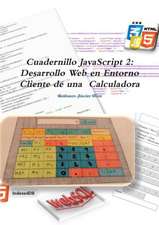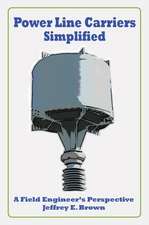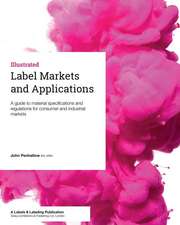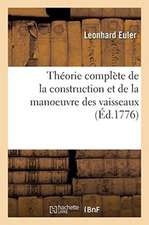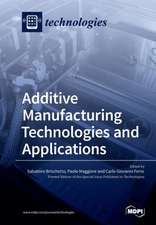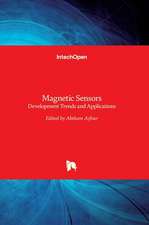SPICE for Power Electronics and Electric Power: Power Electronics and Applications Series
Autor Muhammad H. Rashiden Limba Engleză Hardback – 24 mai 2012
Helpful PSpice Software and Program Files Available for Download
Based on the author Muhammad H. Rashid’s considerable experience merging design content and SPICE into a power electronics course, this vastly improved and updated edition focuses on helping readers integrate the SPICE simulator with a minimum amount of time and effort. Giving users a better understanding of the operation of a power electronics circuit, the author explores the transient behavior of current and voltage waveforms for each and every circuit element at every stage. The book also includes examples of all types of power converters, as well as circuits with linear and nonlinear inductors.
New in this edition:
- Student learning outcomes (SLOs) listed at the start of each chapter
- Changes to run on OrCAD version 9.2
- Added VPRINT1 and IPRINT1 commands and examples
- Notes that identify important concepts
- Examples illustrating EVALUE, GVALUE, ETABLE, GTABLE, ELAPLACE, GLAPLACE, EFREQ, and GFREQ
- Mathematical relations for expected outcomes, where appropriate
- The Fourier series of the output voltages for rectifiers and inverters
- PSpice simulations of DC link inverters and AC voltage controllers with PWM control
Assuming no prior knowledge of SPICE or PSpice simulation, the text provides detailed step-by-step instructions on how to draw a schematic of a circuit, execute simulations, and view or plot the output results. It also includes suggestions for laboratory experiments and design problems that can be used for student homework assignments.
| Toate formatele și edițiile | Preț | Express |
|---|---|---|
| Paperback (1) | 585.27 lei 6-8 săpt. | |
| CRC Press – 29 mar 2017 | 585.27 lei 6-8 săpt. | |
| Hardback (1) | 1570.82 lei 6-8 săpt. | |
| CRC Press – 24 mai 2012 | 1570.82 lei 6-8 săpt. |
Preț: 1570.82 lei
Preț vechi: 1915.63 lei
-18% Nou
Puncte Express: 2356
Preț estimativ în valută:
300.58€ • 310.09$ • 250.83£
300.58€ • 310.09$ • 250.83£
Carte tipărită la comandă
Livrare economică 27 martie-10 aprilie
Preluare comenzi: 021 569.72.76
Specificații
ISBN-13: 9781439860465
ISBN-10: 1439860467
Pagini: 559
Ilustrații: 414 b/w images, 31 tables and 179
Dimensiuni: 156 x 234 x 30 mm
Greutate: 1.2 kg
Ediția:Revizuită
Editura: CRC Press
Colecția CRC Press
Seria Power Electronics and Applications Series
ISBN-10: 1439860467
Pagini: 559
Ilustrații: 414 b/w images, 31 tables and 179
Dimensiuni: 156 x 234 x 30 mm
Greutate: 1.2 kg
Ediția:Revizuită
Editura: CRC Press
Colecția CRC Press
Seria Power Electronics and Applications Series
Public țintă
ProfessionalCuprins
Introduction. Circuit Descriptions. Defining Output Variables. Voltage and Current Sources. Passive Elements. Dot Commands. Diode Rectifiers. DC–DC Converters. Pulse-Width–Modulated Inverters. Resonant-Pulse Inverters. Controlled Rectifiers. AC Voltage Controllers. Control Applications. Characteristics of Electrical Motors. Simulation Errors, Convergence Problems, and Other Difficulties.
Notă biografică
Muhammad H. Rashid is a professor (and past director, 1997−2007) of electrical and computer engineering at the University of West Florida. Dr. Rashid received his BSc degree in electrical engineering from the Bangladesh University of Engineering and Technology, and his MSc and PhD degrees from the University of Birmingham in the United Kingdom. He has worked around the world as a professor of electrical engineering Dr. Rashid is actively involved in teaching, researching, and lecturing in power electronics. He has published 17 books and more than 140 technical papers. His books are adopted as textbooks all over the world. In addition, He has been invited by many foreign governments and agencies to give keynote lectures and consulted by foreign universities to serve as an external examiner for undergraduate, master’s degree, and PhD examinations, by funding agencies to review research proposals, and by U.S. and foreign universities to evaluate promotion cases for professorship. Among his many awards, Dr. Rashid has received the Outstanding Engineer Award from The Institute of Electrical and Electronics Engineers, the IEEE Educational Activity Award (EAB) for Meritorious Achievement Award in Continuing Education, and the IEEE Undergraduate Teaching Award.
Recenzii
" ...an excellent way to learn the basics of PSpice. It provides many examples, generally much better than the software manuals, on how each circuit element is specified and, more importantly, how the various options and special commands are used. There are also good examples that show how to model various circuit components such as a power transformer by using a combination of elements and commands. ... The material on simulation errors contains excellent advice on the little details in PSpice that are important when higher currents and voltages are being used in power electronics and other higher-power circuits. ... Electrical engineering students, especially those with a power engineering interest, will find this book very helpful for validating circuit designs. Electrical engineers will also find this book useful as a concise reference source for PSpice simulation examples for various power electronic circuit examples. It could also be used as a supplemental textbook in an undergraduate electrical engineering course, since it has problems listed at the end of each chapter and is a very good instructional resource book."
—IEEE Electrical Insulation Magazine, November/December 2013
—IEEE Electrical Insulation Magazine, November/December 2013
Descriere
This third edition illustrates the integration of the industry standard software as a tool for design verification and as a theoretical laboratory bench. The book presents examples of all types of power converters as well as circuits with linear and nonlinear inductors. A new chapter covers multi-level converters. Assuming no prior knowledge of SPICE or PSPICE simulation, the text provides detailed step-by-step instructions on how to draw a schematic of a circuit, execute simulations, and view or plot the output results. It also includes suggestions for laboratory experiments and design problems that can be used for student homework assignments.













